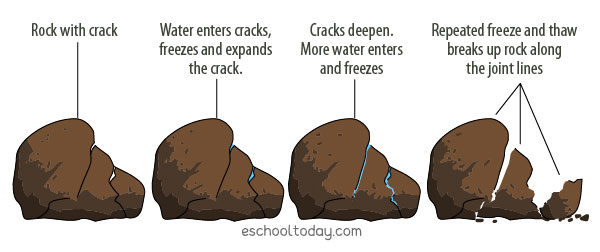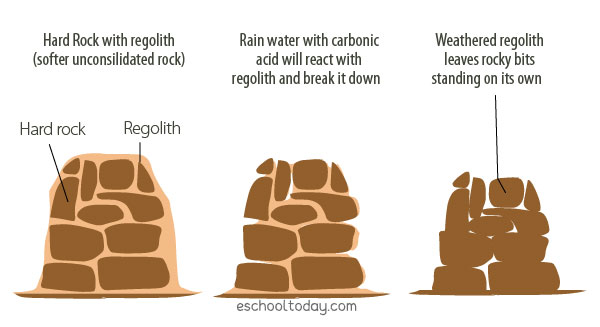- Landforms
How does weathering shape landforms?
Weathering is the breakdown or loosening of surface minerals of rocks after exposure to weathering agents such as water, oxygen (air), organic and inorganic chemicals, and temperature. Weathering occurs in place (in situ). Weathering is the event that comes before the action of erosion. Weathering is responsible for many wonderful landforms usually seen in coastal areas.
In Australia, great natural icons such as Uluru (Ayers Rock), the Twelve Apostles, and Karlwekarlwe (The Devil’s Marbles), as well as the Grand Canyon in the USA, glacial landscapes in Europe, and the huge dune fields of the Sahara Desert in Africa are all examples of weathering and erosion in action.
Erosion, or Weathering?
It is important not to confuse erosion with weathering. The difference is, weathering determines what can be eroded. It is the breakdown of the rock itself. Erosion is when the weathered material is transported to another place by water, wind, or ice. Erosion produces landforms that are often tall and jagged, but deposition usually produces landforms on flat, low land.
Weathering is considered a destructive process in landform formation. The extent of weathering often depends on the makeup of the land, time, and climate (water, wind, and temperature)
Types of Weathering
There are three types of weathering — Physical, Chemical, and Biological. Here is a brief description of them.
- Physical or Mechanical Weathering:
The illustration below shows how rock can undergo physical weathering.

This kind of rock breakdown is mechanical. The chemical composition of the rock material is not affected. It results only in smaller pieces of the parent rock at the same place. Physical weathering is caused by temperature changes, salt crystallization, frost and dust wedging, aeolian abrasion, unloading, and so on.
- Chemical weathering:
The illustration below shows how rock can undergo physical weathering.

This kind of breakdown is due to the chemical reaction of the rock mineral to compounds in air and water present. Chemical weathering can result in a change in the chemical composition of the residual debris and also a change in its color and smell. Some chemical processes in weathering include Hydration, Oxidation, Hydrolysis, Leaching, and Carbonation.
Biological weathering:
This is almost a combination of physical and chemical activity, but usually the action of plant roots, animals, and insects getting into rock crevices and exposing them to chemical and climatic action.
Our research for this topic included these sources:
1. Weathering, erosion, landforms and regolith Teacher notes and student activities Megan E. Lech and Cindy L. Trewin 2nd Edition
